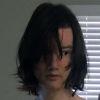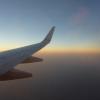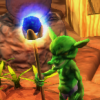My interest in joining Mars One has caused my childhood interest in the universe to resurface (off-topic, but “Last auto saved: 11:55:44 AM”—it’s all in the wrist).
As with almost anything, knowledge frequently comes with reading rather than hands-on research, but I always need some element of hands-on…ed…ness…
…to keep things interesting. It is difficult to touch stellar objects, especially the sun, so I settled for taking photographs of them. Of course you can download pictures of the planets, moon, and sun anywhere (well, not literally), but the interactive element is what makes the images fun. So these are all images that I took myself from my room in Tokyo, Japan, Earth. I hope you enjoy my amateur photography.
[attachment=13549:Sun1.png]
This is the sun.
The sun is too bright to photograph during the day so I took this shot close to midnight when the sun is darkest.
Ho ho ho, you see, I kid. This was taken during the day, but from Japan, which is the land of the rising sun, which is a different and darker sun than yours.
Ho ho ho, you see, I jest. I used ultra-dark filters to put the brightness of the sun into a reasonable range for photography, shutter speed 1/320, F8.0, and ISO 80.
Year 2,013 marks the 11th year of the solar cycle, which is its peak. Solar flares are emitted from sunspots, a few of which are visible here. Just days before I took this, the gigantic sunspot AR1654 was pointing like a cannon directly at Earth, but luckily did not fire. We did however get a direct hit from a solar flare in January, though no one seemed to notice.
For comparison, the black part of the main sunpot is about 1.3 or so times larger than Earth, and some of the flames coming off the photosphere of the sun, especially in the upper-right, are about as tall as the diameter of Earth.
[attachment=13550:Moon6.png]
This is the most recent fool moon. Ho ho ho, I jest—it was actually a very clever full moon.
This was shot as it was rising just after sunset and low on the horizon, giving it a yellowish tint. Tip to all who photograph space, shoot things when they are directly overhead. The more atmosphere between you and the target, the less clear and more tinted the photo will be. I wanted to wait for this one to rise over me for the shot, but I had to go to bed.
[attachment=13551:Moon5.png]
This was taken the night before while the moon was overhead. Not a completely foolish moon, but the jagged outline and craters are much more visible.
[attachment=13552:Moon4.png]
This first-quarter moon shows the craters much better.
[attachment=13553:Jupiter0.jpg]
This is Jupitar. With normal brightness (left) you can easily see its main 4 moons. Ganymede, the largest moon in our solar system, is larger than Mercury!
With brightness reduced (right) the surface features of Jupiter start to appear.
Unfortunately this was a low-horizon shot, which means it could be a lot clearer. I will try to get one while it is overhead soon and will post if the clarity is noticeably better.
This was not digitally scaled—it is the same zoom/scale as the sun and earth shots (although the site might have rescaled those images).
[attachment=13554:Saturn0.png]
Saturn is also fairly easy to spot with the naked eye. With good eyesight you can see her rings without any equipment.
The upper-left square is the non-scaled (same zoom/scale as all previous images) image and the middle is digitally scaled by 4 times.
[attachment=13555:Venus0.png]
Venus, you sneaky girl! Trying to hide between layers of clouds eh? Venus is an inferior planet, meaning it is always in the direction of the sun when viewed from Earth. This means it is only easily visible during sunrise and sunset normally, but it is so bright that it can be seen during clear days and is sometimes mistaken for a UFO.
If there is some interest, more might follow.
L. Spiro
Some of my Photos of Space
I restore Nintendo 64 video-game OST’s into HD! https://www.youtube.com/channel/UCCtX_wedtZ5BoyQBXEhnVZw/playlists?view=1&sort=lad&flow=grid
. 22 Racing Series .
pretty awesome L., as Hodgman said, what's your setup?
also, didn't know it was possible to see saturn with just your eyes.
Very cool. What kind of equipment do you use? Did you have to use any kind of image stacking to get clear results?
There are 2 parts to getting clear results. Firstly, you can’t use presets on your camera; you really have to learn manual mode, which means practice practice practice. There are other things you learn with experience such as to take pictures when the objects are highest in the sky for the most clarity. You can’t get a clear shot with the best equipment in the world if it is low on the horizon.pretty awesome L., as Hodgman said, what's your setup?
But good equipment certainly is also necessary.
I use the Canon PowerShot SX50 HS which has 50× optical zoom built-in. That zoom really helps, but with that much zoom your camera has to be perfectly still even if your shutter speed is 1/2,000. So a sturdy tripod is also necessary. And I really mean it when I say the smallest movements are caught at such a zoom; I used 1/4th of a second shutter speed to capture the moon while I was learning and even in just that short time the moon had moved several pixels across the image, resulting in a blurry image.
For the sun, I used 2 Kenko ND400 filters.
No image-stacking; these are pretty-much the raw results.
6 planets are visible with the nude eye: Mercury, Venus, Earth (you’ve probably seen that one before), Mars, Jupiter, and Saturn.also, didn't know it was possible to see saturn with just your eyes.
Yesterday Mars and Mercury were visible together over the horizon just after sunset. You can still see them both tonight but they will not be as close together. I didn’t get a shot because I had not returned home from the hospital until it was too late.
L. Spiro
I restore Nintendo 64 video-game OST’s into HD! https://www.youtube.com/channel/UCCtX_wedtZ5BoyQBXEhnVZw/playlists?view=1&sort=lad&flow=grid
Oh wow, these are great! I do some astrophotography myself, with a Canon 1100D DSLR - my favourite shots are widefield-style skyscapes, like your Venus picture. Astronomy is awesome!
My best 'woah' moment was one night, around 4 or 5am, when I saw a pass of the ISS - it was brightly lit thanks to the position of the sun, you could clearly see the solar panels and structure and it whipped across the sky pretty quickly
This can be removed with passion.
L. Spiro
I restore Nintendo 64 video-game OST’s into HD! https://www.youtube.com/channel/UCCtX_wedtZ5BoyQBXEhnVZw/playlists?view=1&sort=lad&flow=grid
Oh wow, these are great! I do some astrophotography myself, with a Canon 1100D DSLR - my favourite shots are widefield-style skyscapes, like your Venus picture. Astronomy is awesome!
What kind of lens do you use and what zoom does it have? I am thinking about going to Canon EOS next for the wider options in lenses.
I would love to see the space station but I doubt I ever could from Tokyo.
L. Spiro
I restore Nintendo 64 video-game OST’s into HD! https://www.youtube.com/channel/UCCtX_wedtZ5BoyQBXEhnVZw/playlists?view=1&sort=lad&flow=grid
It's the default lens that shipped with my camera - it's a Canon 18-55mm zoom lens with autofocus. It's nothing special, but it's OK for taking widefield photos which is what I like to do best. If you want to see what the camera can do, then I submitted some of my photos to my university's online magazine:
http://www.thebubble.org.uk/art-photography/photo-gallery-ethereal-nightscapes
Most of those were taken using basic settings (30 second exposures at around ISO800-1600, with minimal processing)
I also did a short timelapse of Jupiter one night (watch in 720p quality or it looks a bit rubbish):
As for the ISS, you should easily be able to see it from Tokyo at a latitude of 36 degrees (I'm at 53 degrees and it's still spectacular).










